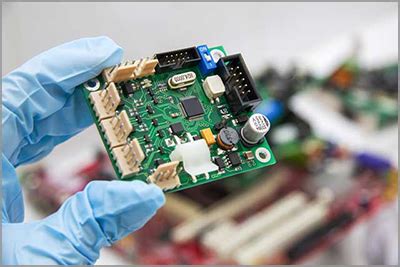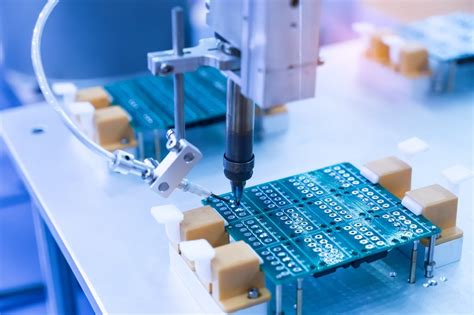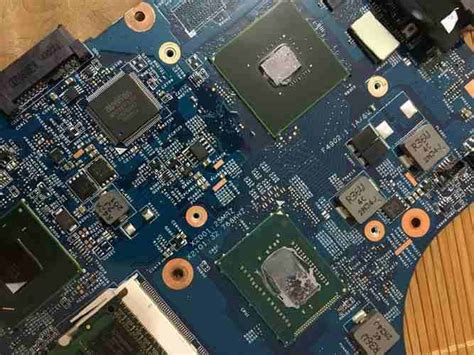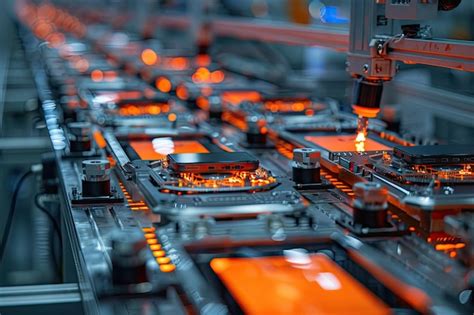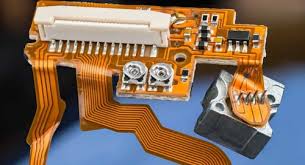Mastering the Art of Components Assembled PCB: A Complete Guide
Key Takeaways
When it comes to pcb assembly, understanding the critical aspects involved can greatly enhance the overall reliability and efficiency of the final product. A well-executed pcba (Printed Circuit Board Assembly) is not just about assembling components; it requires an in-depth knowledge of the various key components and their functions within the circuit. To achieve optimal performance, employing effective techniques for design and layout is crucial, as this can significantly impact signal integrity and thermal management. Additionally, sourcing high-quality components plays a vital role in ensuring that assembled PCBs meet industry standards and project requirements.
One cannot overlook the common challenges faced during pcb assembly, such as alignment issues, soldering defects, or component shortages that can derail a project timeline. Therefore, implementing rigorous quality control measures is essential to mitigate these risks and enhance product reliability. Furthermore, staying informed about future trends in PCB technology can provide insights into innovative assembly techniques that may improve processes or reduce costs over time. By exploring case studies of successful projects utilizing components assembled PCBs, one can glean practical knowledge about best practices that may be applied to future endeavors. Ultimately, mastering these takeaways will contribute significantly to achieving excellence in printed circuit board assembly projects.
Understanding the Basics of Components Assembled PCBs
Components assembled PCBs, often referred to as PCBA, are integral to modern electronic devices, serving as the backbone of functionality and performance. The pcb assembly process involves integrating various electronic components onto a printed circuit board, enabling electrical connections essential for device operation. At its core, understanding the fundamentals of component assembly involves recognizing key terms such as soldering, traces, and vias, which all contribute to the overall performance and reliability of the board.
A typical pcba consists of several critical components—resistors, capacitors, integrated circuits, and connectors—each performing distinct functions. For instance:
| Component Type | Function |
|---|---|
| Resistors | Limit current flow, divide voltages |
| Capacitors | Store energy in an electric field |
| Integrated Circuits | Serve multiple functions in a compact form |
| Connectors | Provide interfaces between devices |
In creating assembly-ready PCBs, designers must consider factors like layout, thermal management, and signal integrity. These basic principles ensure that the board can handle operational demands while minimizing potential interference.
“Good design practices in pcb assembly can prevent a multitude of issues down the line; starting with a solid foundation makes for smoother project execution.”
Implementing best practices at this stage not only enhances product quality but also streamlines sourcing efforts for necessary components. Understanding these basic elements is crucial for anyone looking to delve deeper into the world of components assembled PCBs. This knowledge lays the groundwork for more advanced topics like optimizing production techniques and navigating common assembly challenges.
Key Components and Their Functions in PCB Assembly
In the world of pcb assembly (often referred to as PCBA), understanding the key components and their functions is crucial for creating efficient electronic devices. Each component plays a vital role in the overall operation of the printed circuit board. For instance, resistors are used to control current flow, ensuring that circuits operate correctly without exceeding voltage levels. Capacitors store electrical energy and help in smoothing out voltage fluctuations, which is essential for maintaining power supply integrity. Additionally, inductors are employed for filtering and energy storage in power applications.
Another fundamental element is the integrated circuit (IC), which houses numerous devices like transistors and diodes within a single package, providing complex functionalities such as processing and amplification. Moreover, the placement of components like connectors is integral to ensuring that multiple boards can interface reliably, allowing for expansions or connectivity with other devices.
The design of a PCBA also requires an understanding of effective trace routing and layer stacking to minimize interference between components, thereby enhancing performance. Therefore, gaining familiarity with these components not only illuminates their individual contributions but also highlights their interdependence within the realm of electronic design and assembly. By mastering these fundamentals, you can pave the way towards producing high-quality assemblies that cater to diverse project demands efficiently.
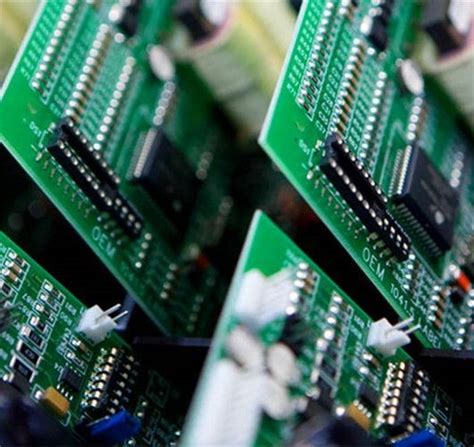
Techniques for Efficient PCB Design and Layout
When considering pcb assembly, it is crucial to implement effective design and layout techniques that contribute to the overall efficiency and reliability of the final product. One foundational principle is to maximize the density of components while minimizing the board’s footprint, which often requires innovative methods like multi-layer designs. This allows for efficient routing of electrical signals, reducing potential interference and enhancing performance. Implementing a clear design rule check (DRC) helps identify layout errors early in the process, ensuring that all components are correctly placed and adhere to manufacturing specifications.
Prioritizing thermal management is essential in maintaining the performance and longevity of assembled PCBs. Techniques such as incorporating thermal vias and strategically placing heat sinks can significantly dissipate heat, preventing overheating of sensitive components. Furthermore, using high-quality traces for power distribution is vital; wider traces can considerably reduce resistance and improve current handling capabilities.
Another key aspect is considering the assembly process early in design—designing for manufacturability (DFM) can greatly enhance production efficiency. This includes allowing sufficient space between components for soldering in case of pcba and ensuring accessibility for inspection tools during quality control stages. By applying these techniques throughout the design phase, engineers can create a robust foundation that supports efficient pcb assembly while addressing potential challenges ahead of time.
Best Practices for Sourcing Components for Assemblies
When it comes to pcb assembly, sourcing the right components is fundamental to the success of any project. Companies should strive to establish solid relationships with reliable suppliers who can provide not only high-quality parts but also timely delivery. To begin, conducting thorough market research can help identify potential vendors that specialize in specific types of components necessary for your pcba needs. It is then crucial to evaluate these suppliers based on criteria such as industry reputation, certification, and previous customer reviews.
Additionally, maintaining an updated inventory list of commonly used components can streamline the sourcing process. Building strategic partnerships with multiple suppliers enables businesses to quickly pivot in case of shortages or supply chain disruptions, ensuring that production timelines remain intact. Moreover, considering regional suppliers can reduce lead times and shipping costs, making it a more economical approach.
Another best practice is to stay informed about emerging technologies and trends in component manufacturing. Many suppliers now offer advanced components such as smart chips or eco-friendly materials that could enhance the performance or sustainability of your pcb assembly. Finally, always prioritize compliance with industry standards and regulations when selecting components, as this will not only guarantee product reliability but also ensure consumer safety. By implementing these best practices in sourcing strategies, organizations can significantly enhance the efficiency and reliability of their printed circuit board assemblies.
Exploring Common Challenges in PCB Assembly
When it comes to pcb assembly, several common challenges arise that can impact the efficiency and reliability of the final product. One major hurdle is the alignment issues during the assembly process. Misalignment can lead to poor connectivity and malfunctioning of the printed circuit board (PCB). Additionally, variations in component tolerances can create complications during pcba (printed circuit board assembly), as components may not fit together as intended, which may result in increased troubleshooting times. Another significant challenge lies in sourcing components; global supply chain disruptions can delay the availability of essential parts, affecting project timelines. Furthermore, maintaining quality control throughout the entire pcb assembly process is crucial, as even minor defects can lead to substantial failures in functionality. Understanding these challenges and proactively addressing them with effective strategies not only enhances the efficiency of pcba processes but also ensures that the end products meet industry standards and client specifications.
Quality Control in Components Assembled PCBs
Ensuring the highest standards in pcb assembly is crucial for the overall performance and reliability of the final product. Quality control (QC) processes for pcba involve meticulous testing and inspection to identify defects early in the production cycle. This includes verifying that all key components are correctly placed and soldered according to the design specifications. Employing automated optical inspection (AOI) systems can significantly enhance detection rates for common issues, such as shorts, opens, or misaligned components. Furthermore, functional testing serves as a critical step, ensuring that the assembled circuit boards operate as intended under various conditions. By integrating comprehensive QC measures into the pcb assembly workflow, manufacturers can minimize risks associated with product failures and enhance customer satisfaction. Effective quality control not only reduces rework costs but also fosters improved product longevity and performance in diverse applications. Emphasizing a robust QC protocol ultimately contributes to advancing industry standards while supporting innovative practices in pcba manufacturing.
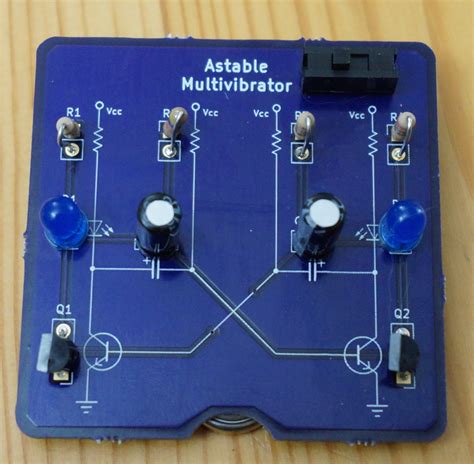
Future Trends in PCB Technology and Assembly Techniques
The landscape of pcb assembly and PCBA is continuously evolving, driven by advancements in technology and the growing demands of the electronics market. One notable trend is the increasing use of automation in the assembly process, which not only enhances efficiency but also reduces the likelihood of human error. Automation technologies such as robotics and machine learning enable manufacturers to streamline operations, resulting in faster production times and improved consistency in quality. Moreover, techniques such as additive manufacturing are gaining traction, allowing for more intricate designs that were previously difficult to achieve with traditional methods.
Another significant trend is the push towards miniaturization. As devices become smaller and more portable, components assembled PCBs must follow suit. This shift necessitates innovative design strategies that accommodate smaller components without compromising functionality or reliability. Manufacturers are also focusing on materials that provide better performance while reducing weight—such as advanced substrates that enhance electrical conductivity.
Sustainability has emerged as a crucial consideration in the industry, with more companies looking to implement environmentally friendly practices in their pcb assembly processes. This includes sourcing materials responsibly and minimizing waste through efficient production techniques. Furthermore, as industries continue to embrace IoT (Internet of Things) technologies, there is an increasing demand for PCBs that can support a higher density of functionalities while maintaining performance standards.
Ultimately, staying ahead of these future trends in PCB technology will be essential for companies looking to innovate and remain competitive in a rapidly changing environment. With ongoing research and development efforts aimed at addressing these challenges, the future of printed circuit board technology looks promising, paving the way for more reliable and efficient solutions tailored to modern electronic needs.
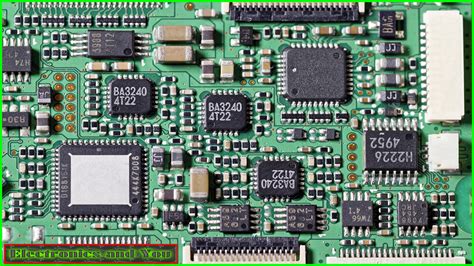
Case Studies: Successful Projects Using Assembled PCBs
In the realm of pcb assembly, various industries have leveraged the capabilities of assembled PCBs (PCBA) to achieve remarkable success in their projects. One notable case is in the automotive sector, where precision and reliability are paramount. Companies have adopted enhanced pcba practices to streamline assembly processes, allowing for the development of advanced driver-assistance systems (ADAS). These systems require impeccable integration of sensors and controls, showcasing the critical role of efficient pcb assembly in ensuring safety and functionality.
Another example can be seen in consumer electronics, particularly in smartphones. Manufacturers utilize advanced techniques in pcba to minimize space while maximizing performance. By streamlining component placement and optimizing layout designs, they achieve higher functionality within compact formats, allowing for faster processing speeds and improved user experiences.
Furthermore, the medical devices industry provides a compelling case of how assembled PCBs can revolutionize product design. For instance, portable diagnostic equipment integrates complex circuitry on compact PCBs to deliver vital health information swiftly. In these projects, adhering to strict quality control standards is essential to comply with regulatory requirements and ensure patient safety.
These case studies exemplify how rigorous application of best practices in components assembled PCB leads not only to successful project outcomes but also fosters innovation across various fields. Whether enhancing vehicle safety or improving healthcare delivery, pcb assembly plays a vital role in pushing boundaries and enabling technological advancements that meet evolving consumer demands and industry standards.
Conclusion
As we reach the end of this exploration into components assembled PCBs, it becomes clear that mastering pcb assembly is essential for anyone involved in electronics manufacturing. Understanding the intricacies of pcba allows you to enhance efficiency and ensure reliability in your projects. By implementing the best practices discussed, including mindful sourcing and effective layout techniques, you can overcome common challenges and improve the overall quality of your assemblies. Additionally, staying abreast of future trends in PCB technology will empower you to innovate and adapt to an ever-evolving industry landscape. Ultimately, whether you’re embarking on a new project or refining existing processes, the knowledge gained here serves as a solid foundation for creating outstanding printed circuit boards that meet both functionality and performance standards. Embrace this expertise as you navigate your journey in the world of components assembled PCBs, ensuring successful outcomes for all your electronic endeavors.

FAQs
What is PCB assembly?
PCB assembly, often abbreviated as PCBA, refers to the process of connecting electronic components onto a printed circuit board (PCB) to create a functional circuit. This process encompasses various techniques including surface mount technology (SMT) and through-hole technology.
What are the key components used in PCBA?
Key components in PCB assembly include resistors, capacitors, diodes, integrated circuits (ICs), and connectors. Each component plays a crucial role in ensuring the board functions correctly.
Why is quality control important in PCB assembly?
Quality control is vital in pcb assembly as it helps ensure that all components are functioning properly and that the final product meets industry standards. This prevents defects that could lead to operational failures.
What are some common challenges faced during PCBA?
Some challenges include managing component placement accuracy, solder joint reliability, and addressing thermal issues. These factors can significantly affect the performance and longevity of the assembled PCBs.
How can I improve my PCB design for better assembly?
Improving your PCB design involves simplifying layouts to minimize trace lengths, optimizing component placement for efficient soldering, and ensuring proper clearances for heat dissipation.
Where can I find reliable suppliers for PCB components?
Reliable suppliers can often be found through industry trade shows, online marketplaces specializing in electronic components, or through recommendations from other professionals in the field.


